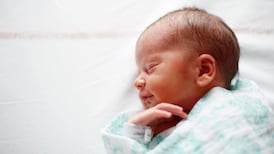Chief Supt Michael Finnegan of the Louth/Meath division has said the Garda would welcome further information from the IRA on exactly where they placed the remains of the so-called disappeared. He made his comments shortly after Mr Seamus McKendry called for the IRA to release more information on where the bodies, including that of his mother-in-law, Jean McConville, lay .
Speaking at Oristown bog near Kells in Co Meath, the chief superintendent said: "We are very conscious of the trauma for the families and we would love to have the locations pinpointed more than they are at the moment".
Last night, gardai were continuing to map two locations in the bog with special ground-penetrating radar. This will give them information on any soil disturbances in the ground. However, the scale of the task facing the search team was not helped by the realisation that 14 years ago a lot of the bog was stripped to open it up.
The information given to the Garda by the Independent Commission for the Location of Victims' Remains is that the body of one man will be found there. Members of his family visited the area on Sunday night. Garda Supt Oliver Lewis of Kells said: "At the moment we are searching an area of approximately 30 sq metres. It is being examined with the equipment and following the completion of that we will carry out an assessment of what to do next".
Chief Supt Finnegan said the terrain at the second site in Meath, at Coghalstown Wood, which is about five miles from the bog, was even worse. "That has been sealed off but the search has not commenced yet. The terrain at that point will be very difficult. It is a boggy area which is overgrown with trees and the exact location has not been pinpointed so it's going to be a very difficult operation."
In relation to the excavations at Templeton in Louth, he said gardai had expected to find the remains after two full days of work. "We are disappointed, we would have hoped for the families' sake that we would have recovered the body by now. The plan is to keep digging. While we believe there is a body to be found there, we will keep digging." In Monaghan, the waterlogged bogs were making progress very slow. At Colgagh outside Carrickmacross, pumps were clearing around 20,000 gallons of water an hour. Gardai then went in and searched the marshy soil for any human remains.
The Independent Commission told the Garda there should be two graves at that location, those of John McClory and Brian McKinney. A brother and two sisters of Mr McClory visited the scene yesterday morning and stayed until mid-afternoon. They laid bouquets of flowers underneath a tree adjacent to the excavations and watched the work for some time.
Garda Insp Noel Cunningham said: "We have great difficulty here with water, we have specialised pumping machines in today. We had some pumps yesterday but they simply could not cope with the capacity of water coming in. We are now pumping away and averaging 15-20,000 gallons an hour allowing us to search it meticulously, which we are doing."
The initial site given to the Garda is 30 metres by 30 metres. However people who knew the area 30 years ago say the terrain has changed significantly. The road leading to the scene was only a path and the water levels were different. However the site was just as isolated and secluded.
On the side of Bragon mountain in Emyvale, north Monaghan, the first digger brought in by gardai to search for a single grave began to sink. Two dogs and metal detectors were used before the Garda brought in machinery to release water from the drains. Again there were no indications of any remains being found when the searches wound down for the night.





